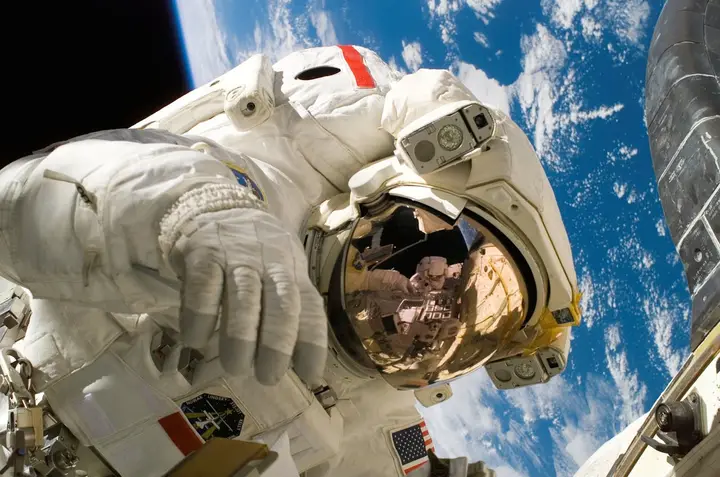Unveiling the Paradox of Speed: The Counterintuitive World of Relativity
Posted by: sunxin in Science 3 months, 2 weeks ago
Have you ever wondered what happens when you add the speed of light to your own velocity? Or what occurs when two objects travel at close to the speed of light relative to each other? The answers might surprise you, as they delve into the fascinating realm of special relativity. Let's embark on a journey through spacetime to uncover the mysteries behind the Lorentz transformation and the constancy of light speed.
The Mysterious Cycloid Curves of Europa: A Tidal Tale
Posted by: sunxin in Science 3 months, 2 weeks ago
What if I told you that beneath the icy crust of Jupiter's moon Europa lies a world of enigmatic patterns, shaped by forces far more complex than we initially imagined? Today, we're diving into the peculiar cycloid curves that adorn Europa's surface, a mystery that has科学家 scratching their heads for years.
Unraveling the Mysteries of Spacetime: The Invariant Interval
Posted by: sunxin in Science 3 months, 2 weeks ago
Have you ever wondered how the fabric of reality behaves when viewed from different perspectives? The principles of relativity suggest that our perceptions of lengths, distances, and time intervals are far from absolute, shifting with each moving frame of reference. But what can we truly agree upon in this relativistic landscape? The answer lies in the concept of the invariant spacetime interval—a universal constant that remains unchanged regardless of one's velocity.
The Elliptical Orbit: A Dance of Geometry and Physics
Posted by: sunxin in Science 3 months, 2 weeks ago
Have you ever wondered why the planets trace elliptical paths around the sun? It's a question that has intrigued scholars for centuries, leading to some of the most elegant theories in physics. Today, we're going to dive into one such theory, brought to us by the legendary Richard Feynman, which explains why planets orbit in ellipses. Prepare to be amazed as we blend geometry and physics in a way that's both elementary and profound.
The Sweet Mysteries of Caramel: A Gastrophysical Exploration
Posted by: sunxin in Science 3 months, 2 weeks ago
Have you ever wondered how a simple white, odorless cube of sugar transforms into a rich, golden caramel? This enchanting metamorphosis isn't just a culinary magic trick; it's a fascinating journey into the world of gastrophysics. Let's delve into the science behind the sweet stuff.
Unveiling the Mysteries of the Twins Paradox: A Journey Through Spacetime
Posted by: sunxin in Science 3 months, 2 weeks ago
Have you ever wondered what would happen if you could travel at nearly the speed of light? How would it affect your perception of time and space? These questions lead us to the heart of special relativity and the intriguing twins paradox. Let's embark on a journey through the fabric of spacetime to uncover the secrets behind this mind-bending scenario.
The Ingenious Physics Behind Stabilizing the Majestic: How Small Adjustments Stop the Sway
Posted by: sunxin in Science 3 months, 2 weeks ago
Have you ever wondered why skyscrapers don't wobble like trees in a storm? What keeps these towering giants grounded and steady, even when nature throws its worst at them? Today, we're diving into the fascinating world of physics to uncover the secrets behind dampening the sway of the colossal, and we're doing it with a twist of Lego creativity.
The Enigma of Room-Temperature Nuclear Fusion: A Glimpse into Muon Magic
Posted by: sunxin in Science 3 months, 2 weeks ago
Have you ever pondered the incredible power of the sun, driving its radiant energy from the core where temperatures and densities are so extreme that hydrogen and helium nuclei can fuse, releasing a colossal amount of energy? What if I told you that such a process could theoretically occur at temperatures as low as room temperature? Intriguing, isn't it?
The Mysterious Journey of Muons: Unveiling the Wonders of Special Relativity
Posted by: sunxin in Science 3 months, 2 weeks ago
Have you ever wondered what happens when cosmic rays collide with our atmosphere? Or why we can detect muons, particles with an incredibly short lifespan, traveling tens of kilometers from the upper atmosphere to the Earth's surface? Prepare to be amazed as we dive into the fascinating world of muons and the principles of special relativity.
The Enigma of Quantum Cats: A Double Double-Slit Paradox
Posted by: sunxin in Science 3 months, 2 weeks ago
Have you ever pondered the peculiar dance of quantum particles? Imagine a laser beam interacting with a wall pierced by two holes, a classic setup in the world of physics known as the double slit experiment. But what if we replace the laser with cats? The results might surprise you, and even challenge our understanding of reality.
Recent Posts
- Tragedy Unfolds: The Heartbreaking Attack at Mogadishu's Leo Beach
- Clash in Liverpool: The Battle Between Anti-Racism and Anti-Immigration
- Tragedy Unfolds: Kerala's Heartbreaking Battle with Landslides
- Tragedy in Tarim: A Glimpse into the Aftermath of Israeli Aerial Strikes
- The Tragic Attack on Hamama School: A Story of Innocence Lost in Shik Radwan
Categories
- Official Announcement (3)
- News (1653)
- 新闻 (28)
- Technology (300)
- 科技 (235)
- 科普 (418)
- Science (409)
- 公开课 (180)
- MOOC (183)
- Business (36)
- 揭秘 (143)
- Mysteries (124)



